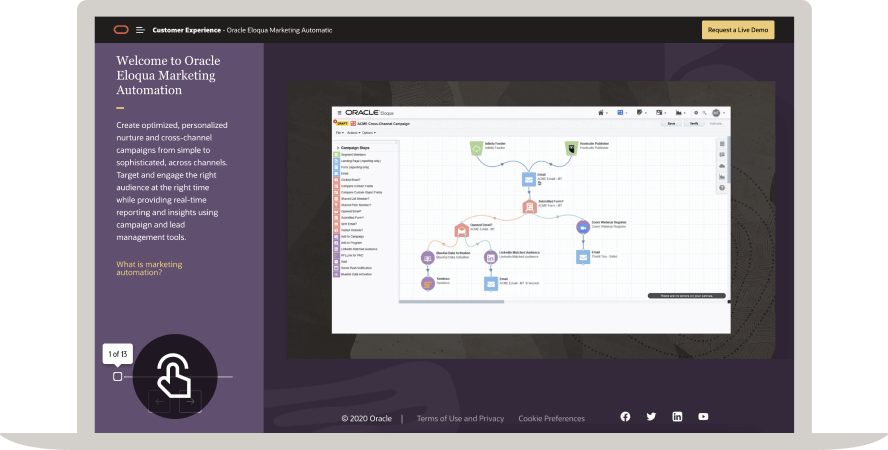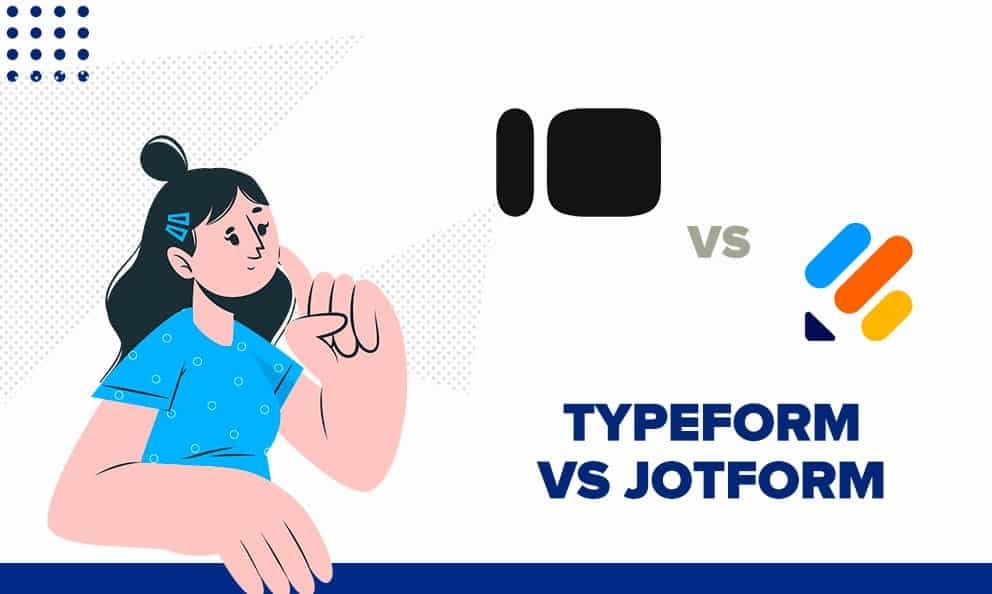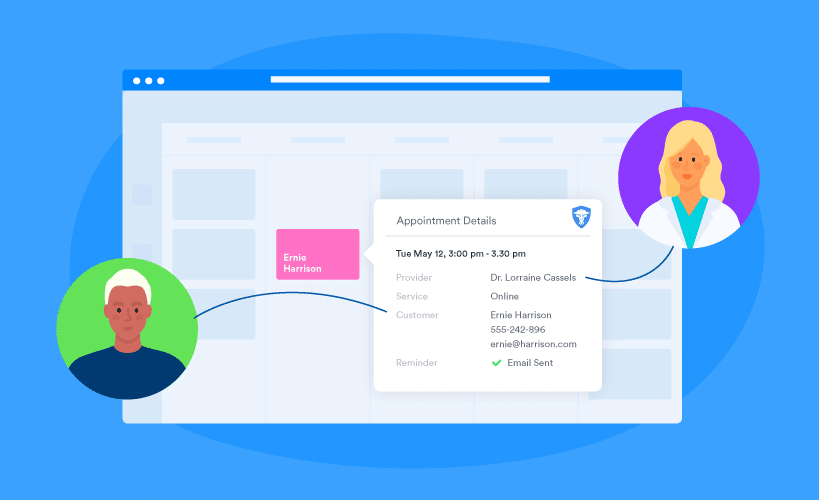Marketing automation software helps businesses streamline marketing tasks. It saves time and boosts efficiency.
In the digital age, marketing automation software is crucial. It automates repetitive tasks like email campaigns, social media posts, and ad management. This software uses data to personalize customer experiences, making marketing efforts more effective. By understanding customer behavior, it helps target the right audience at the right time.
Marketing teams can focus on strategy rather than manual tasks, improving overall productivity. In this blog, we’ll explore how marketing automation software works, its key features, and the benefits it brings to businesses. Discover how it can transform your marketing efforts and drive growth. Stay tuned to learn more!

Credit: encharge.io
Introduction To Marketing Automation
Marketing automation software is changing the way businesses approach their marketing strategies. It’s not just a tool; it’s a game changer. You might wonder how such software can impact your business. Let’s dive right in.
Why Automation Matters
Automation matters because it saves you time. Instead of doing repetitive tasks, you can focus on big-picture strategies. Imagine setting up an email campaign once and having it run automatically.
Think about the data you can collect. Automation tools track customer behavior, helping you understand what works and what doesn’t. This means you can tweak your campaigns in real-time for better results.
Additionally, it’s about consistency. Automated messages ensure that your brand’s voice stays consistent. Your audience gets the same quality interaction every time.
Benefits Of Automation
One major benefit is efficiency. You get more done in less time. For example, automating social media posts means you don’t have to be online 24/7.
Another benefit is improved customer engagement. Automated emails can be personalized based on user behavior. This makes your communication more relevant and engaging.
Finally, there’s the benefit of better ROI. Automation helps you manage your budget effectively. You can allocate resources to what’s working and cut down on what’s not.
Have you ever thought about how much time you spend on manual tasks? Marketing automation frees up that time, letting you focus on what truly matters—growing your business.
Key Features Of Marketing Automation Software
Marketing automation software offers a suite of tools designed to streamline marketing tasks. These tools help businesses automate repetitive processes. This includes email campaigns, social media posts, and tracking customer interactions. The software enhances efficiency and improves customer engagement.
Email Marketing Automation
Email marketing automation simplifies the process of sending emails. It allows businesses to schedule and send personalized emails. You can create targeted campaigns based on customer behavior. The software can also track open rates and click-through rates. This helps in refining future email campaigns.
Social Media Management
Social media management tools automate social media tasks. These include scheduling posts and tracking engagement. You can monitor mentions and respond to comments promptly. The software also helps in analyzing social media metrics. This is crucial for understanding audience preferences. It ensures consistent and timely social media presence.
Lead Generation And Nurturing
Lead generation and nurturing are vital parts of marketing automation. These processes help attract potential customers and guide them through the sales funnel. Understanding how marketing automation software aids in these tasks is crucial for any business.
Capturing Leads
Marketing automation software can capture leads from various sources. These sources include websites, social media, and email campaigns. The software tracks visitor behavior on your website. It identifies potential leads based on their actions. For example, downloading an eBook or filling out a form. This information is then stored in a central database for further analysis.
Scoring And Qualifying Leads
Once leads are captured, they need to be scored and qualified. Marketing automation software assigns scores to leads based on their behavior. Actions like visiting key pages or engaging with emails increase their score. High scores indicate strong interest in your products or services.
Qualifying leads ensures that only the most promising prospects are pursued. The software uses predefined criteria to filter out unqualified leads. This process saves time for your sales team. They can focus on leads that are more likely to convert.
Personalization And Segmentation
Marketing automation software can significantly enhance your marketing efforts by allowing you to personalize and segment your audience. Personalization and segmentation are crucial for creating targeted marketing campaigns that resonate with your audience. This helps in delivering the right message to the right person at the right time.
Creating Segments
Creating segments is the first step towards personalizing your marketing efforts. Segments are groups of people who share similar characteristics or behaviors. For instance, you can create segments based on demographics like age or location, or behaviors like purchase history and website interactions.
Consider using your customer data to identify these segments. This data can come from various sources like email subscriptions, website analytics, and social media interactions. Once you have your segments, you can tailor your marketing messages to each group.
Imagine you are an online retailer. You might have a segment of customers who frequently purchase sports equipment. Another segment might consist of customers who only buy during sales. By understanding these groups, you can send relevant offers and content that will be more likely to convert.
Personalized Content
Personalized content is about delivering messages that are specifically tailored to each segment. This makes your audience feel valued and understood, which can increase engagement and conversions. Personalized content can range from customized email subject lines to product recommendations based on past purchases.
Think about your own experience as a customer. Have you ever received an email that felt like it was written just for you? Maybe it mentioned your name, recommended products you were already interested in, or offered a discount on something you needed. This is the power of personalized content.
To create personalized content, start by analyzing the data you have collected about your segments. Use this information to craft messages that will resonate with each group. Tools within marketing automation software can help you automate this process, ensuring that each customer receives content that is relevant to them.
Ask yourself, how can you make your customers feel special? What information do you have that can help you create content that speaks directly to their needs and interests? By focusing on personalization and segmentation, you can create more effective marketing campaigns that drive better results.
Workflow Automation
When it comes to marketing automation software, understanding how workflow automation operates can be a game changer. Workflow automation streamlines and automates repetitive marketing tasks, saving you time and effort. Let’s dive into the nitty-gritty of how it works.
Automated Campaigns
Automated campaigns are the backbone of workflow automation. You can set up email sequences to nurture leads, schedule social media posts, and create targeted ad campaigns—all without manual intervention.
Imagine you have a new product launch. You could create an email campaign that sends a series of emails to your subscribers over a few weeks, automatically. This keeps your audience engaged and informed, without you having to lift a finger after the initial setup.
Automated campaigns also allow for A/B testing. You can test different subject lines, content, and calls-to-action to see what resonates best with your audience. This data-driven approach ensures your campaigns are always improving.
Triggered Responses
Triggered responses are another essential feature of workflow automation. These are actions that occur automatically when a specific condition is met. Think of it as setting up a chain reaction.
For example, if a customer abandons their shopping cart, the system can automatically send a reminder email. This nudge can significantly reduce cart abandonment rates and increase your sales.
Triggered responses can also be used for lead scoring. If a lead visits your pricing page, downloads a resource, or signs up for a webinar, the system can automatically score their activity and move them further down the sales funnel.
Have you ever wondered how much time you could save with these automated processes? By letting the software handle routine tasks, you can focus on more strategic activities, like creating content or engaging with your audience.
So, are you ready to streamline your marketing efforts and make your life easier? Implementing workflow automation in your marketing strategy could be the key to achieving that goal.
Analytics And Reporting
When diving into the world of marketing automation software, one of the most crucial aspects to understand is Analytics and Reporting. This feature allows you to track, measure, and analyze your marketing efforts to ensure you are making data-driven decisions. Let’s break down how this works, focusing on performance metrics and ROI analysis.
Performance Metrics
Performance metrics are the heartbeat of your marketing campaigns. These metrics provide detailed insights into how your campaigns are performing. They help you understand what’s working and what’s not.
For instance, you can track email open rates, click-through rates, and conversion rates. Seeing these numbers helps you tweak your strategies for better outcomes. It’s like having a roadmap that shows you the exact route to take for success.
Think about the last time you ran a campaign. Did you know which part of it was the most effective? Performance metrics give you this clarity, making sure every move you make is backed by solid data.
Roi Analysis
Return on Investment (ROI) is a critical measure for any marketing activity. With marketing automation software, you can easily calculate the ROI of your campaigns. This helps you determine whether your marketing efforts are paying off.
Imagine you’ve launched a new product and run several campaigns to promote it. By analyzing the ROI, you can see which campaign brought in the most revenue. This helps you allocate your budget more effectively in the future.
Are you getting the most bang for your buck? ROI analysis helps you answer this question definitively. It ensures that your marketing dollars are being spent wisely, driving growth and profitability.
To sum up, analytics and reporting in marketing automation software are indispensable tools for any marketer. By focusing on performance metrics and ROI analysis, you can make informed decisions that propel your business forward.
Integration With Other Tools
Marketing automation software connects with various tools like CRM systems, email platforms, and social media. This integration ensures seamless data flow and efficient campaign management.
When diving into marketing automation software, one crucial aspect is how it integrates with other tools. Integration ensures a seamless workflow, making your marketing efforts more efficient. Let’s explore how it connects with various tools, starting with CRM systems and third-party apps.Crm Integration
CRM integration is vital for effective marketing automation. Imagine having your customer data and marketing efforts in one place. It eliminates manual data entry and reduces errors. For instance, when you integrate with a CRM like Salesforce, your marketing team can see customer interactions and tailor campaigns accordingly. This means more personalized communication, which can lead to higher engagement rates. Real-time data sync is another perk. Updates in your CRM reflect instantly in your marketing tools, ensuring consistency. This real-time flow of information helps your sales and marketing teams stay aligned.Third-party Apps
Marketing automation software often integrates with various third-party apps to expand functionality. This can include social media platforms, email marketing tools, and analytics software. Think about connecting your automation software with social media tools like Hootsuite. You can schedule posts, track engagement, and even automate responses. It saves time and ensures your social media strategy is cohesive. Email marketing tools like Mailchimp also benefit from integration. Automatically segment your email lists based on customer behavior tracked by your automation software. It creates a more targeted approach, improving open and click-through rates. Analytics integration is another game changer. Tools like Google Analytics help you track the performance of your automated campaigns. You can quickly see what’s working and what needs adjustment. In conclusion, integrating your marketing automation software with other tools is not just beneficial, it’s essential. It streamlines your processes, aligns your teams, and enhances your overall marketing strategy. Are you ready to elevate your marketing efforts with seamless integration?Choosing The Right Software
Marketing automation software can transform your business. But choosing the right one is crucial. With so many options, the decision can be daunting. You need to consider features, budget, and your specific needs.
Evaluating Features
First, make a list of must-have features. Common features include email marketing, lead scoring, and CRM integration. Check if the software offers these. Look for user-friendly interfaces. Complex systems can be a hassle. Ensure the software supports your marketing goals. Some tools offer unique features like social media management. These can be valuable.
Considering Budget
Budget is a significant factor. Marketing automation software comes in various price ranges. Identify your budget first. Some software offers tiered pricing. This can help you get started without overspending. Always consider the return on investment. Expensive does not always mean better. Compare different options within your budget. Look for hidden costs. Some tools may charge for extra features.
Future Trends In Marketing Automation
As we look ahead, the future of marketing automation is brimming with exciting possibilities. New technologies are constantly reshaping how businesses interact with their audience. Let’s dive into some of the most promising trends that will shape the landscape of marketing automation.
Ai And Machine Learning
AI and machine learning are not just buzzwords; they are transforming how marketing automation works. Imagine software that learns from every interaction, refining its strategies over time. This means more effective campaigns that target the right audience with the right message.
Picture this: You send out an email campaign. AI analyzes which subject lines get the most opens, which content gets the most clicks, and even which times are best to send. You don’t have to guess anymore; the software does the heavy lifting for you.
Have you ever wondered why some ads seem to know exactly what you need? That’s AI at work. By analyzing your behavior, it predicts your needs and tailors ads just for you. It’s like having a personal shopper who knows your taste better than you do!
Enhanced Personalization
Personalization is no longer optional; it’s essential. Customers expect experiences that feel unique and relevant to them. Enhanced personalization in marketing automation ensures that each interaction feels custom-made.
Consider your favorite online store. You get personalized recommendations based on your browsing history and past purchases. It feels like they know you, right? That’s the power of enhanced personalization in marketing automation.
What’s more, it can go beyond just emails and ads. Think about personalized content on websites, custom landing pages, and even personalized chatbots that remember your preferences. The possibilities are endless.
Are you leveraging these trends in your marketing strategy? If not, it’s time to start. The future of marketing automation is here, and it’s all about making your job easier and your campaigns more effective.

Credit: www.constantcontact.com

Credit: www.oracle.com
Frequently Asked Questions
How Does Marketing Automation Work?
Marketing automation uses software to streamline, automate, and measure marketing tasks. It helps nurture leads, personalize messages, and improve efficiency. Businesses can schedule emails, manage campaigns, and analyze performance for better results.
How Does Automation Software Work?
Automation software performs tasks using predefined rules and algorithms. It mimics human actions, enhances efficiency, and reduces errors.
How Does Marketing Software Work?
Marketing software automates tasks, tracks campaigns, and analyzes data. It helps businesses manage social media, email marketing, and SEO strategies efficiently.
Is Marketing Automation The Same As Crm?
No, marketing automation and CRM are not the same. Marketing automation focuses on automating marketing tasks, while CRM manages customer relationships and sales processes.
Conclusion
Marketing automation software simplifies tasks, saving time and effort. It streamlines email campaigns and social media posts. The software tracks customer interactions efficiently. This helps improve marketing strategies over time. Businesses can nurture leads with personalized content. Increased efficiency leads to better customer engagement.
Marketing automation tools are essential for modern businesses. They support growth and improve productivity. Embrace these tools to stay competitive.





